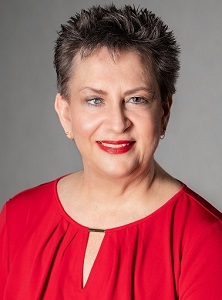In today’s society, the pressure to conform to unrealistic beauty standards and maintain a certain body shape or size has led to an increase in the prevalence of eating disorders and disordered eating patterns. While these terms may sound similar, it is crucial to understand the distinct differences between eating disorders and disordered eating. This article aims to shed light on these two concepts, emphasising the importance of early recognition, seeking professional help, and fostering a healthy relationship with food and body image.
1. Understanding Eating Disorders:
Eating disorders are serious, potentially life-threatening mental illnesses that impact a person’s eating behaviours, thoughts, and emotions. They are characterised by severe disturbances in eating patterns, accompanied by an intense preoccupation with weight, shape, and body image. Three commonly diagnosed eating disorders include:
a) Anorexia Nervosa: Individuals with anorexia nervosa typically restrict their food intake significantly, leading to extreme weight loss and a distorted perception of their body size. They often exhibit a fear of gaining weight and may engage in excessive exercise or purging behaviours.
b) Bulimia Nervosa: People with bulimia nervosa experience recurrent episodes of binge eating, followed by compensatory behaviours such as self-induced vomiting, excessive exercise, or misuse of laxatives or diuretics.
c) Binge Eating Disorder: This disorder involves recurrent episodes of binge eating, characterised by a loss of control during these episodes. Unlike bulimia nervosa, individuals with binge eating disorder do not engage in compensatory behaviours, leading to weight gain and associated emotional distress.
2. Disordered Eating:
Disordered eating refers to a range of abnormal eating behaviours that do not meet the clinical criteria for an eating disorder. While disordered eating does not represent a specific diagnosis, it can still have detrimental effects on one’s physical and mental health. Examples of disordered eating patterns include:
a) Chronic dieting or yo-yo dieting: Engaging in restrictive diets or frequent weight cycling can disrupt the body’s natural hunger and satiety cues, leading to an unhealthy relationship with food.
b) Orthorexia: This condition involves an obsessive fixation on consuming only “clean” or “healthy” foods, to the point of severely limiting food choices, causing nutritional deficiencies, and social isolation.
c) Night eating syndrome: Individuals with night eating syndrome consume a significant portion of their daily caloric intake during nighttime hours, often accompanied by feelings of guilt and shame.
3. The Relationship Between Eating Disorders and Disordered Eating:
While eating disorders and disordered eating may exist on a continuum, it is important to recognise that not all individuals with disordered eating will develop a clinically diagnosable eating disorder. However, disordered eating patterns can be a risk factor for the development of more severe eating disorders.
4. Seeking Help and Promoting Recovery:
Recognising the signs of both eating disorders and disordered eating is crucial in promoting early intervention and seeking professional help. Individuals experiencing symptoms such as severe weight loss, obsessive thoughts about food or body image, or engaging in harmful behaviours should reach out to healthcare professionals, therapists, or registered dieticians specialising in eating disorders.
Conclusion:
Understanding the distinction between eating disorders and disordered eating is essential for fostering a healthy relationship with food and body image. While eating disorders are diagnosed mental illnesses that require specialised treatment, disordered eating patterns can still negatively impact physical and mental well-being. By raising awareness, encouraging open dialogue, and promoting early intervention, we can work towards a society that prioritises overall well-being and supports those struggling with eating disorders or disordered eating patterns.
 Author: Merryl Gee, BSocWk, AMHSW, MAASW, MACSW, MANZMHA, MPACFA.
Author: Merryl Gee, BSocWk, AMHSW, MAASW, MACSW, MANZMHA, MPACFA.
Merryl Gee is a psychotherapist working from a strengths-based, person-centred framework. With over 30 years’ experience, she has a particular interest people who have experienced trauma such as sexual assault or childhood sexual abuse.
To make an appointment with Brisbane Psychotherapist Merryl Gee try Online Booking. Alternatively, you can call M1 Psychology Loganholme on (07) 3067 9129 or Vision Psychology Wishart on (07) 3088 5422 .
References:
1. American Psychiatric Association. (2013). Diagnostic and Statistical Manual of Mental Disorders (5th ed.). Arlington